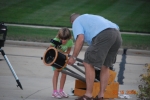Freakonomics interviews David Shenk about his new book. Mr. Shenk had some notable observations about genius and the work behind it.
[E]verything about talent is a process. There’s the genetic piece, and then there’s the ability piece. When you look very closely at [Michael] Jordan’s life, you see a rather ordinary teenage athlete with no particularly grand ambition until about mid-way through high school…After the deep disappointment of not making the varsity team, Jordan developed an unparalleled ambition that quite simply dwarfed that of his schoolmates in high school and later his teammates at the University of North Carolina. Jordan’s abilities developed according to what he demanded of himself.
The same is true of other super-achievers. From a distance, it looks like they’ve got something almost super-human about them. But when you look up close, at the moment-to-moment lives they lead, the sacrifices they make, the extraordinary resources they have around them, their abilities actually do make logical sense. If it’s documented closely enough, you can actually see how they went from mediocre to good, from good to great, from great to extraordinary.
He also gives some advice to parents that seem well put. Persistence is more important than prodigy. In fact, prodigy can box in young technical achievers into a comfort zone from which they will fear to emerge. He says:
Show your kids how hard you work, how often you experience disappointments and how you respond to those disappointments. If you blame others for your failures or simply give up, that’s what your kids will learn. If you take on a long-term challenge, show a deep commitment to the process and a refusal to give up in the face of adversity, your kids will pick that up instead.
Filed under: Personal Posts, Fun, Genius, Kids, New York Times, Personal, Philosophy, Work













